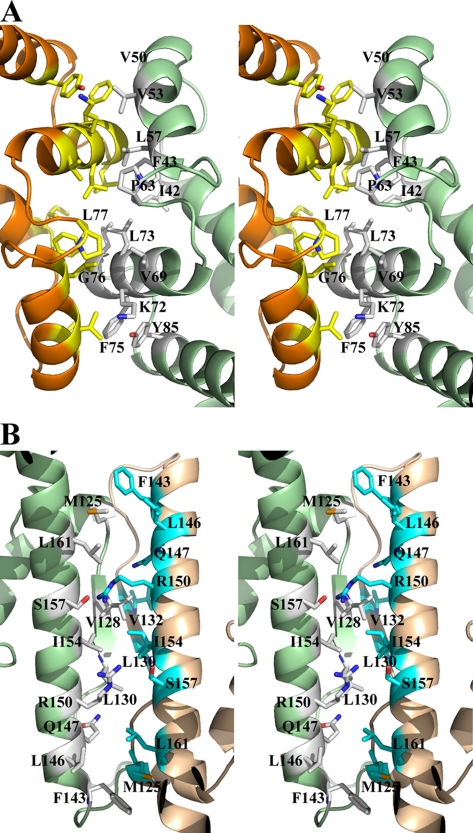FIGURE 4.
The dimer interface and potential tetramer interface of Vp-MtlR. A, stereo ribbon drawing of the dimeric interface of the AB-dimer as shown in Fig. 1. The predominant hydrophobic residues involved in the dimer formation are drawn in sticks and colored differently according to monomers. Since the dimer is of a pseudo-2-fold symmetry, only those residues from one monomer are labeled. B, stereo ribbon drawing of the potential tetrameric interface, which corresponds to the interface between the monomers B and C and represents the interaction between the AB-dimer and the CD-dimer as shown in Fig. 1A. The residues from two dimers involved in the dimer-dimer interactions are drawn in sticks and colored in different codes. The two flexible loops between α7 and α9 helices form a pair of antiparallel strands with five main chain-main chain hydrogen bonds.

